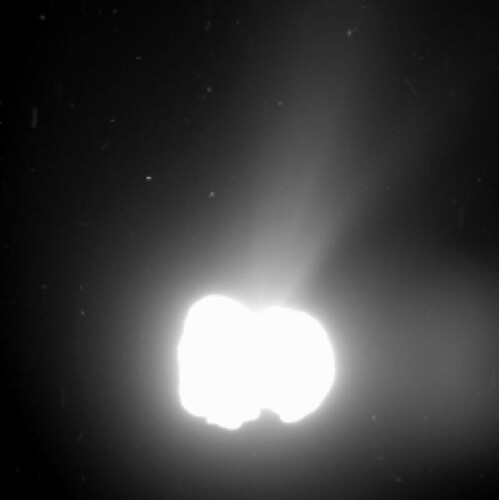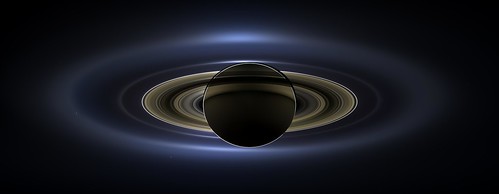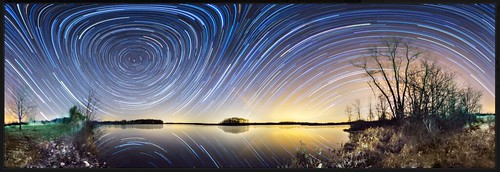Free NSR webinar July 30 – Energy Markets via Satellite: Is There a Market Beyond Deep Water?
[NSR – July 30]
The United States claims China conducted a “non-destructive” test of an anti-satellite missile July 23 and called for China to end the development of such capabilities.
[Space News – 07/28/2014]
Bandwidth demand for maritime markets to exceed 160 satellite transponders by 2023.
[NSR – 07/28/2014]
Communication with Russian satellite Photon-M restored.
[Science Recorder 07/26/2014]
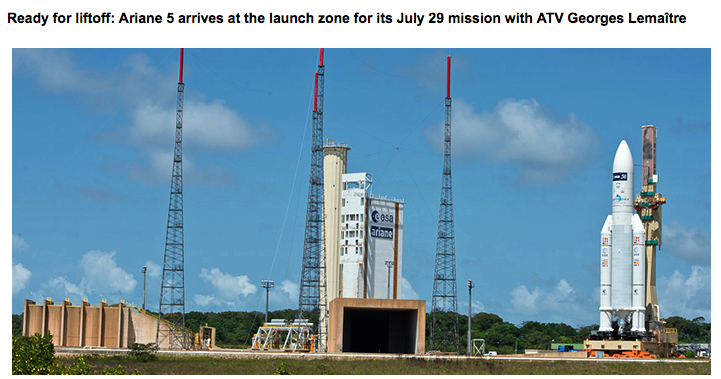
Ariane 5 approaches the launch pad – SatNews file photo.
Ariane 5 gets ready for launch of heaviest-ever payload as is rolls out the rocket for the July 29 liftoff of the final ATV mission.
[SatNews – 07/28/2014]

Europa concept is a nuclear-powered probe known as Clipper (above). Credit: NASA/JPL-Caltech artist’s concept – Space News
If NASA sends a nuclear-powered probe to Jupiter’s moon Europa, it would launch no sooner than 2024, and effectively rule out other nuclear missions to the outer solar system before then.
[Space News – 07/28/2014]
Eutelsat America Corp has been awarded a contract by the US Air Force to support the deployment of future US Government payloads (hosted payloads) on its satellites.
[Satellite Evolution Group – 07/28/2014]
MTN continues to lead the cruise market.
[Satellite Evolution Group – 07/28/2014]
Viasat acquires Gray Labs and gets its high-rate modem product line and custom spacecraft technologies for Earth observation.
[SatNews – 07/28/2014]
Avanti and Yahsat reportedly first to order satellites from Orbital Sciences based on the new GeoStar-3 higher-power satellite frame.
[Space News – 07/25/2014]

SES 12 – Credit: SES – Space News
SES ordered its first high-throughput satellite because it was unable to provide optimal service to certain government and mobility customers with a conventional wide-beam satellite.
[Space News – 07/25/2014]

ULA rocket with DMSP satellite – Credit: ULA photo – Space News
U.S. Department of Defense wants to reprogram money this year to boost the number of competitively awarded contracts under its primary satellite launching program.
[Space News – 07/25/2014]

WB-57 – Credit: NASA photo by Sean Smith – Space News
NASA crew of WB-57 caught sight of the SpaceX Falcon 9 as it ascended, and of the first stage as it plummeted toward the ocean, but was unable to get a good shot of the descending stage’s first engine burn.
[Space News – 07/25/2014]
Rockwell Collins sells its military ground-based satellite communications business.
[Market Watch – 07/25/2014]
In preparation for Iridium NEXT, the company has issued more than 30 RFPs to build new broadband subscriber products.
[Via Satellite – 07/25/2014]
Thales Alenia Space claims it holds a profit advantage over rival Airbus. Defence and Space.
[Space News – 07/25/2014]
API Technologies wins million dollar order for manufacture of commercial satellite communication systems.
[Market Watch – 07/25/2014]
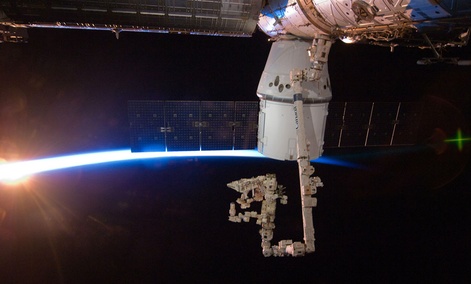
SpaceX Dragon capsule berths at the International Space Station // NASA // Nextgov
SpaceX scores partial victory in bid to get slice of government contracting, as a federal judge agrees to review a multi-bi8llion-dollar contract awarded to ULA without competition.
[Nextgov – 07/25/2014]
Japanese airline Skymark Airlines is providing In-Flight Connectivity (IFC) free of charge to fliers via Panasonic Avionics’s eXConnect global connectivity service.
[Via Satellite – 07/25/2014]
RSCC, in partnership with OOO Isatel, put satellite-supported broadband equipment on board the Russian research/survey vessel Akademik Tryoshnikov for Artic mission.
[SatNews – 07/25/2014]
Surrey Satellite Technology US has decided on five payloads to carry on the company’s Orbital Test Bed (OTB) mission in 2016
[Via Satellite – 07/25/2014]

Rally – OFFROAD.COM file photo – OFFROAD.COM
SATMODO provides satellite phones for BAJA RALLY.
[Off-Road.com – 07/25/2014]
Intelsat completes move from Washington DC’s Van Ness neighborhood to Tysons.
[Tech Bisnow – 07/25/2014]
Hughes, Thales showcase rapidly deployable LTE network using 700 MHz public safety spectrum & satellite.
[PCC Mobile Broadband – 07/25/2014]
The launch of three U.S. Air Force space surveillance satellites July 24 was postponed for the second time in as many days, this time because of weather conditions.
[Space News – 07/24/2014]

Roscosmos photo – The Moscow Times
Russian Communications and Mass Media Minister wants Russia to produce all of its communications satellites on home soil as sanctions threaten availability of high-tech components.
[The Moscow Times – 07/24/2014]

NASA’s Mars Odyssey spacecraft passes above Mars’ south pole in this artist’s concept illustration handout released by NASA July 24, 2012. – Reuters
NASA puts out a call for a commercially owned and operated satellite network on Mars.
[Reuters – 07/24/2014]

Via Satellite file map – Via Satellite
NOAA has awarded a license to Tempus Global Data for a hyperspectral imaging and sounding system constellation.
[Via Satellite – 07/24/2014]
Space Systems/Loral (SSL is one of the companies selected by NASA to study system concepts and key technologies for NASA’s Asteroid Redirect Mission.
[Satellite Evolution Group – 07/24/2014]
China Eastern Airlines offers broadband connected flights over China using China Telecom Satellite aeronautical service and Panasonic Avionics Corporation’s eXConnect system.
[Market Watch – 07/24/2014]
Retiring Senator Jay Rockefeller hopes to lay groundwork for congressional action that would allow online video services to offer even more programming options than cable and satellite companies could.
[National Journal – 07/23/2014]
Budget cuts and newly developing threats to operations in space demand change in calculus on resiliency of the Defense space program.
[U.S. Department of Defense – 07/23/2014]
SES launches first free-to-air digital TV platform in West Africa.
[ScreenAfrica – 07/23/2014]
Ultra-HD TVs make gains but still lack market penetration according to IHS.
[Satellite Markets & Research – 07/23/2014]
Web-connected cabins offer investment opportunities as the market for inflight internet is set to grow to $2.1 billion by 2023 according to Euroconsult report.
[Reuters – 07/22/2014]
Honeywell’s latest passenger survey on In-Flight Connectivity (IFC) shows just how much the mindset toward flying connected has changed.
[Via Satellite – 07/22/2014]
Purdue University students to test green rocket propellant they developed, partnering with Aerojet Rocketdyne to demonstrate the fuel can replace hydrazine.
[R&D Magazine – 07/22/2014]
UK’s Department for International Development (DFID) has announced a ground-breaking strategic partnership with the private sector to deliver e-learning programs in Kenya to thousands of marginalized girls.
[SatNews – 07/22/2014]
Despite oversupply in a few regions and bands due to accelerated satellite construction, NSR projects the market will grow by 76 percent, from about $11.8 Billion currently to $21.1 Billion by 2023.
[SatNews – 07/21/2014]
Arianespace wins launch contract for Sentinel 1B satellite.
[Via Satellite – 07/21/2014]
O3b begins service with full initial constellation.
[Via Satellite – 07/21/2014]
China and Brazil agree to continue the China-Brazil Earth Resources Satellite program with an additional satellite, CBERS 4A.
[Via Satellite – 07/21/2014]

SatNews graphic – SatNews
Department of Defense awards satcom support contracts for SSC Pacific. [SatNews – 07/21/2014]
DARPA awards SSL contract for flight hardware capable of taking a variety of small missions to space aboard the company’s GEO satellite platform.
[Via Satellite – 07/22/2014]

NOAA photo of magnetometer – Nextgov
The fifth of six instruments to be carried by the GOES-R next generation weather satellites, the magnetometer, is now ready for integration.
[Nextgov – 07/21/2014]
Liquid Telecom steps up resources leased from Eutelsat to meet increasing demand for IP connectivity from broad portfolio of clients including national parks and mining and exploration.
[SatNews – 07/21/2014]
Airbus Defense and Space expands strategic agreement with Inmarsat on Global Xpress high-speed broadband to resell to U.S. government market.
[Space Daily – 07/21/2014]
AltegroSky Group’s acquisition of CJSC’s “Moskovsky Teleport” allow entry into new market segments of satellite communications.
[SatNews – 07/21/2014]
Inmarsat keen on offering India high-tech services of monitoring climate, power grids, and water levels in reservoirs in real-time without human intervention.
[Zee News – 07/20/2014]
NSR report, “Global Satellite Capacity Supply and Demand, 11th Edition” now available.
[NSR – July 2014]
WBMSAT satellite communications consulting services
